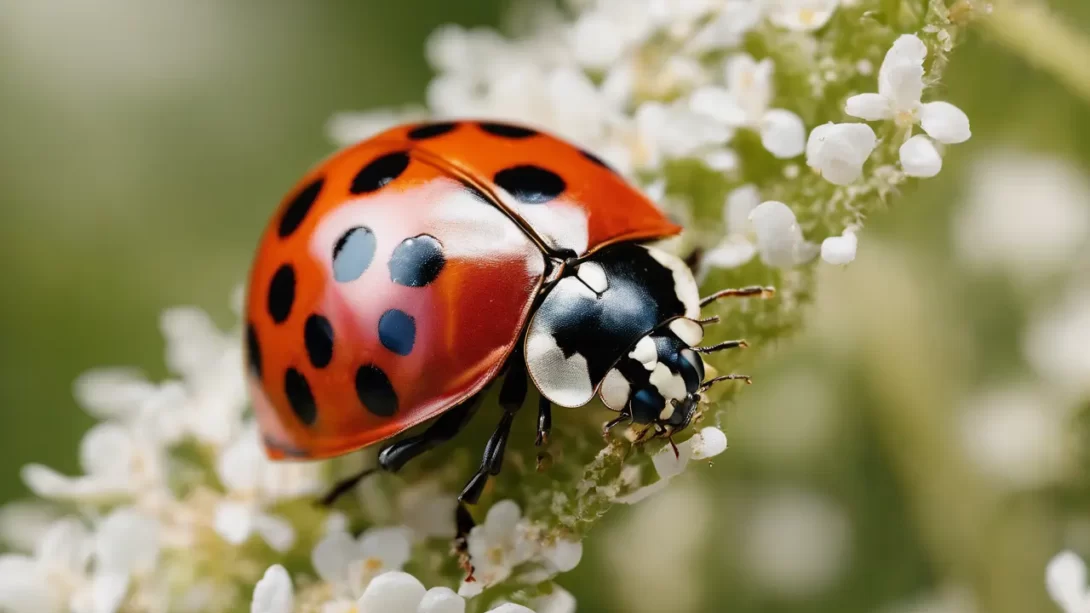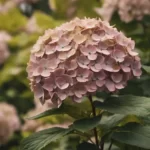In the realm of natural pest control, ladybugs hold a prestigious status due to their appetite for various garden pests. Among these pests are mealybugs, notorious for their damaging effects on plants. This article seeks to answer a key question for gardeners and agriculturists alike: Do ladybugs consume mealybugs as part of their natural diet? Understanding this relationship is crucial for those looking to employ natural methods in pest management.
Ladybugs
Ladybugs, or lady beetles, are easily recognized by their distinct, often bright-colored shells and spotted appearance. They undergo a complete metamorphosis in their life cycle, transitioning from egg to larva, then to pupa, and finally to adult. Known as voracious predators, ladybugs are valued in gardens and farms for their ability to control pest populations. Their diet primarily consists of soft-bodied insects like aphids and scales, which they consume in large quantities.
Overview of Mealybugs
Mealybugs are small, soft-bodied insects covered with a white, waxy coating, giving them a cotton-like appearance. They feed on plant sap, often congregating in large numbers and causing significant damage to a wide range of plants. Mealybugs not only weaken plants by extracting their sap, but they also excrete a sticky substance known as honeydew, which leads to the growth of sooty mold. Due to their protective wax coating and tendency to hide in crevices, mealybugs can be challenging to control using traditional methods.
Ladybugs as Predators of Mealybugs
The predatory nature of ladybugs extends to a variety of garden pests, raising the question of their effectiveness against mealybugs. Research and anecdotal evidence suggest that certain species of ladybugs do prey on mealybugs. Ladybug larvae, in particular, are known for their voracious appetite and can consume mealybugs as part of their diet. However, the extent to which ladybugs can control mealybug populations varies depending on several factors, including the species of ladybug and the environmental conditions.
Integrating Ladybugs into Pest Management
Utilizing ladybugs as a natural means of controlling mealybugs can be an effective component of an integrated pest management (IPM) strategy. To attract ladybugs to a garden, it’s essential to provide a habitat conducive to their survival. This includes having a variety of plants that attract them, such as angelica, cosmos, and marigolds, which provide pollen and nectar for adult ladybugs.
For more immediate control, gardeners can purchase and introduce ladybugs directly into their gardens. When releasing ladybugs, it’s important to do so in the evening or early morning, when cooler temperatures reduce the likelihood of them flying away. Ensuring that the garden is moist can also help encourage the ladybugs to stay and begin feeding on pests like mealybugs.
While ladybugs can be an effective means of controlling mealybugs, there are limitations to this method. Ladybugs may disperse from the area if the food source is depleted or if environmental conditions are not favorable. Additionally, not all ladybug species are equally effective against mealybugs, and some may prefer other types of prey.
Alternative Natural Control Methods for Mealybugs
Apart from ladybugs, there are other natural predators of mealybugs that can be used in pest management. These include lacewings and certain species of predatory beetles, which can be introduced into the garden in a similar manner to ladybugs.
Biological control agents, such as parasitic wasps that target mealybugs, can also be effective. These wasps lay their eggs inside or on the mealybugs, and the hatching larvae feed on their host, eventually killing it.
In addition to biological controls, cultural practices such as removing infested plant parts and avoiding over-fertilization (which can encourage mealybug outbreaks) are important. Using horticultural oils or insecticidal soaps can also help control mealybugs without harming beneficial insects like ladybugs.
Conclusion
In conclusion, ladybugs, particularly their larvae, do feed on mealybugs and can be a beneficial addition to a garden or agricultural setting for natural pest control. However, while they can help manage mealybug populations, ladybugs should be part of a broader integrated pest management (IPM) strategy. This approach combines biological, cultural, and chemical methods tailored to the specific conditions and needs of the garden or farm.
Attracting or introducing ladybugs is a natural and environmentally friendly way to combat mealybugs, but it’s important to recognize the limitations of this method. Ladybugs may not always target mealybugs exclusively and can disperse if the conditions aren’t ideal. Thus, relying solely on ladybugs for mealybug control may not be sufficient in all cases.
Other natural predators like lacewings and parasitic wasps, along with cultural practices and selective use of insecticidal soaps or horticultural oils, can complement the work of ladybugs in controlling mealybugs. Removing infested plant parts and maintaining a balanced fertilizer regime are also critical in preventing mealybug outbreaks.
Understanding the role of ladybugs and other beneficial insects in the ecosystem underscores the importance of using sustainable and environmentally responsible pest management practices. By fostering a diverse and balanced garden ecosystem, gardeners and farmers can effectively manage pests while promoting the health and vitality of their plants, and the broader environment.
Encouraging natural pest control methods, like the use of ladybugs, not only helps manage garden pests like mealybugs but also contributes to the conservation of beneficial insect populations. As we continue to learn and apply these integrated pest management techniques, we can enjoy healthier gardens and contribute to a more sustainable and harmonious relationship with nature.



